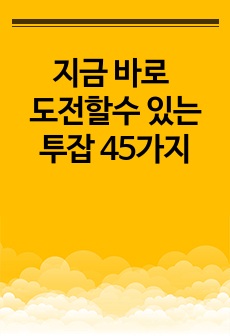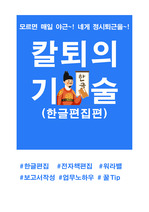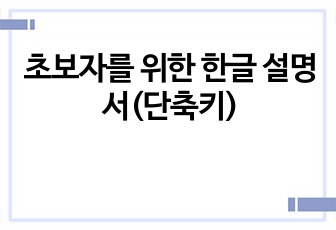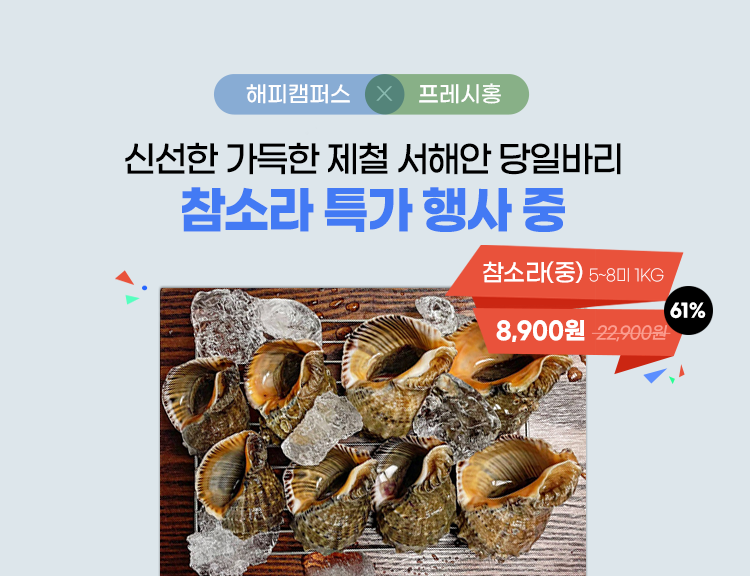* 본 문서는 배포용으로 복사 및 편집이 불가합니다.
서지정보
ㆍ발행기관 : 이화여자대학교 교과교육연구소
ㆍ수록지정보 : 교과교육학연구 / 18권 / 4호
ㆍ저자명 : 정현철, 고전규, 곡효파
ㆍ저자명 : 정현철, 고전규, 곡효파
목차
I. 서 론 1II. 소규모 학교 체육 3
1. 소규모 학교란? 3
2. 소규모 학교의 특징 3
III. 연구 방법 5
1. 연구 설계 5
2. 연구 참여자 5
3. 자료 수집 6
4. 자료 분석 7
IV. 결 과 8
1. 소규모학교 체육의 특징 8
2. 소규모학교 체육 활성화 방안 14
V. 결론 및 제언 20
Abstract 23
한국어 초록
본 연구는 소규모학교 체육의 현 주소를 이해하고 소규모학교 체육 활성화를 위한 구체적 실천 내용과 그 의미를 살펴보는데 목적이 있다. 이러한 연구 목적을 달성하기 위하여 농촌지역 소규모학교에서 3년 이상 근무한 경력이 있으며 2013년 J도교육청특색사업인 소규모학교 ‘건강체력 UP-Program’ 개발에 참여한 교사 6명과 교사들이 속해 있는학교 학생 중 체육활동에 열정을 가지고 참여하는 대표학생 6명을 대상으로 연구를 진행하였다. 참여관찰, 심층면담,수업일지 등을 통해자료를 수집한 뒤 단계적 코딩을 거쳐 귀납적 범주분석을 통해 요인들을 추출하였다. 소규모학교체육의 특징으로 환경적 요인으로는 넓은 운동장, 친환경적 여건, 낙후된 용기구, 작은 강당, 스포츠문화 부재 등으로 나타났으며, 체육수업요인으로는 개별화 수업 용이, 효율적 상호작용 및 피드백, 팀스포츠 활동의 어려움, 경쟁?표현 활동의 부재로 나타났다. 스포츠클럽 요인으로는 특색있는 신체활동 운영, 스포츠클럽 시간 부족과 스포츠클럽대회 미흡, 토요스포츠데이 부재로 나타났다. 기타 요인으로 생활습관병의 축소, 영양?보건 전문 교사의 부재로 나타났다. 이를 극복 하기 위한 방안으로는 첫째, 출발점이 같은 뉴스포츠 종목과 같은 경쟁 스포츠로 서열화 깨기와사회성 함량을, 부족한 표현활동은 스마트 게임과 예술 강사 정책을 통해서 둘째, 소규모학교에 적합한 ‘게임만들기’수업을 통한 통합적인 체육수업의 창의?인성기르기를, 셋째, 소규모학교 스포츠 클럽 운영은 우수학교스포츠클럽 운영과 거점학교 스포츠클럽 대회 및 체육대회를 통해 스포츠클럽과 스포츠문화의 활성화를, 넷째, 영양?보건전문가의부재는 스마트 앱을 활용한 지속적인 관심과 체계적인 관리로 나타났다. 본 연구는 소규모학교 체육 활성화에 따른체계적인 실천과 실현방법을 토대로 소규모학교 체육 교육과정에 실천적 자료가 되기를 기대하는 바이다.|This study intends to diagnose the status quo of physical education in small-sized schools and evaluate the overall progress made in the facilitation of physical education in small-sized schools. For this purpose, studies were carried out on 6 teachers who have worked in small-sized rural schools for 3 years or more and have participated in the development of the 'health-related physical fitness UP-Program' in small-sized schools, which is a special project by the Office of Education in J province in 2013, and 6 students who have enthusiastically participated in physical activities in the schools where the teachers have worked. Data were collected through participant observation, in-depth interview, class journal, etc., and factors were extracted through inductive category analyses. With regard to the characteristics of physical education in small-sized schools, the environmental factors were spacious playgrounds, environment-friendly circumstances, outdated equipment, small auditoriums, and the absence of sports culture. The physical education class factors were individualized classes, efficient interaction and feedback between teachers and students, difficulties in team sports activities, and the absence of competition·expression activities. Sports club factors were Distinctive physical activities, the lack of sports club time, the insufficiency of sports club event, and the absence of Saturday sports days Other factors included The reduction of diseases related to lifestyle and the absence of teachers specializing in nutrition·health. The measures for overcoming these deficiencies were as follows. First, undermining hierarchy and developing sociality could be fostered through competitive sports such as ‘new sports game to toe the same line’, and insufficiency of expression activity could be increased through smart game-and-art instructor policies. Second, creativity·character can be developed in an integrated physical education class through ‘create a game’ classes, which are suitable for small-sized schools. Third, sports club and sports culture can be facilitated through systematic management of school sports clubs, nucleus school sports club events, and athletic meetings. Fourth, the absence of nutrition·health specialists can be fixed with persistent attention and systematic management by utilizing the smart app. It is hoped that the results of this study will become practical data for the physical education curriculum in small-sized schools on the basis of systematic practice and implementation method according to the facilitation of physical education in small-sized schools.영어 초록
This study intends to diagnose the status quo of physical education in small-sized schools and evaluate the overall progress made in the facilitation of physical education in small-sized schools. For this purpose, studies were carried out on 6 teachers who have worked in small-sized rural schools for 3 years or more and have participated in the development of the 'health-related physical fitness UP-Program' in small-sized schools, which is a special project by the Office of Education in J province in 2013, and 6 students who have enthusiastically participated in physical activities in the schools where the teachers have worked. Data were collected through participant observation, in-depth interview, class journal, etc., and factors were extracted through inductive category analyses. With regard to the characteristics of physical education in small-sized schools, the environmental factors were spacious playgrounds, environment-friendly circumstances, outdated equipment, small auditoriums, and the absence of sports culture. The physical education class factors were individualized classes, efficient interaction and feedback between teachers and students, difficulties in team sports activities, and the absence of competition·expression activities. Sports club factors were Distinctive physical activities, the lack of sports club time, the insufficiency of sports club event, and the absence of Saturday sports days Other factors included The reduction of diseases related to lifestyle and the absence of teachers specializing in nutrition·health. The measures for overcoming these deficiencies were as follows. First, undermining hierarchy and developing sociality could be fostered through competitive sports such as ‘new sports game to toe the same line’, and insufficiency of expression activity could be increased through smart game-and-art instructor policies. Second, creativity·character can be developed in an integrated physical education class through ‘create a game’ classes, which are suitable for small-sized schools. Third, sports club and sports culture can be facilitated through systematic management of school sports clubs, nucleus school sports club events, and athletic meetings. Fourth, the absence of nutrition·health specialists can be fixed with persistent attention and systematic management by utilizing the smart app. It is hoped that the results of this study will become practical data for the physical education curriculum in small-sized schools on the basis of systematic practice and implementation method according to the facilitation of physical education in small-sized schools.참고 자료
없음태그
"교과교육학연구"의 다른 논문
 혁신의 확산 이론을 통해 본 블렌디드 러닝의 수용과 채택35페이지
혁신의 확산 이론을 통해 본 블렌디드 러닝의 수용과 채택35페이지 초등도덕교과교육의 도덕적 정체성관련 요소 탐색24페이지
초등도덕교과교육의 도덕적 정체성관련 요소 탐색24페이지 마킹 기능이 컴퓨터기반 읽기 평가의 결과 및 수험자의 인식에 미치는 영향17페이지
마킹 기능이 컴퓨터기반 읽기 평가의 결과 및 수험자의 인식에 미치는 영향17페이지 일반계 고등학생 영어 학업 성취도의 분석20페이지
일반계 고등학생 영어 학업 성취도의 분석20페이지 원소와 원자의 구분 관점에서 본 중등학교 교과서의 원소 서술 분석21페이지
원소와 원자의 구분 관점에서 본 중등학교 교과서의 원소 서술 분석21페이지 온라인 카페(online cafe) 활용 체육수업을 통한 여고생들의 교실공동체, 상호학습 및 수업 ..14페이지
온라인 카페(online cafe) 활용 체육수업을 통한 여고생들의 교실공동체, 상호학습 및 수업 ..14페이지 대학 일반 화학 실험의 가설 설정 과정에서 변인 교체와 변인 조합 활동을 강조한 교수 전략의 효과24페이지
대학 일반 화학 실험의 가설 설정 과정에서 변인 교체와 변인 조합 활동을 강조한 교수 전략의 효과24페이지 초등학생들의 과학 태도 수준에 따른 과학동적화 분석17페이지
초등학생들의 과학 태도 수준에 따른 과학동적화 분석17페이지 듀이의 ‘행함에 의한 학습(learning by doing)’의 의미 탐구20페이지
듀이의 ‘행함에 의한 학습(learning by doing)’의 의미 탐구20페이지 자유학기제 연구학교의 수업과 교육활동의 특징 분석27페이지
자유학기제 연구학교의 수업과 교육활동의 특징 분석27페이지



























